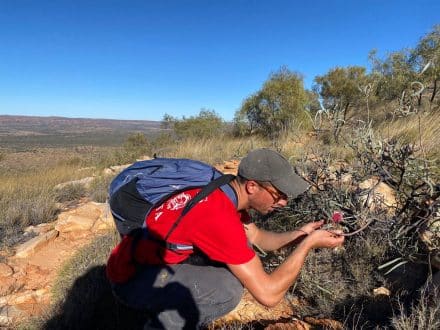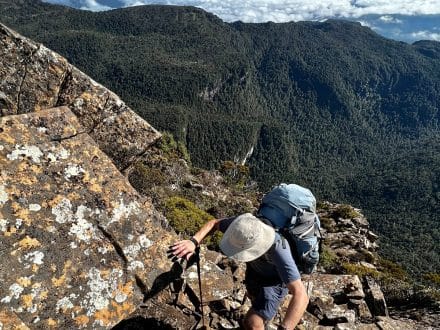Two day walks in takayna / Tarkine offer splendour beyond words in one of the largest expanses of cool temperate rainforest in the world.
It’s a month into the Tasmanian spring and snow is my constant companion as I climb Mount Murchison in the south of the Tarkine wilderness. From the beginning of the climb in rainforest, to the craggy ramparts at the peak, snow ranges from a thin blanket to knee-deep drifts. Scanning the near 360° view from the 1,275-metre summit helps you appreciate the scale of the Tarkine. The landscape below is literally blanketed to the horizon in the deep green treetops of the Southern Hemisphere’s largest tract of temperate rainforest.
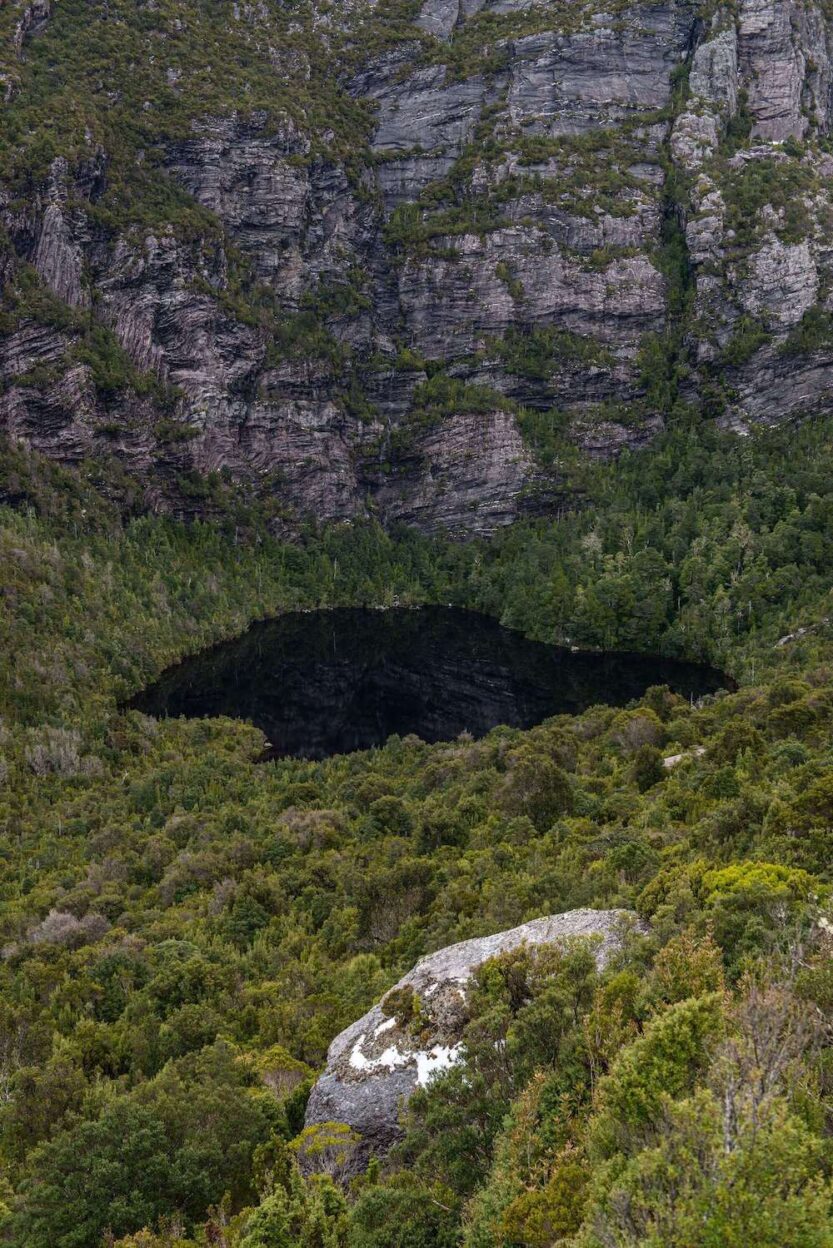
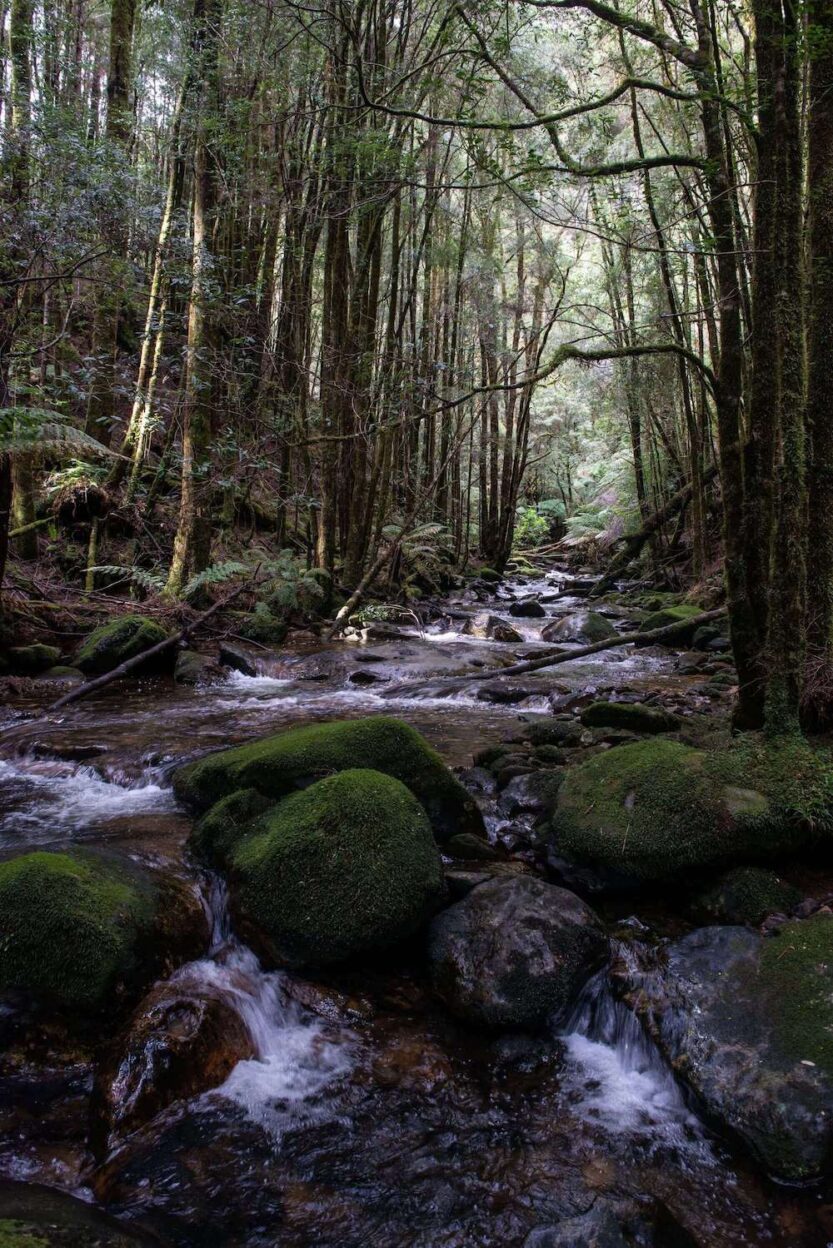
I’d hoped to do an overnight walk, to better experience this almost-mythical wilderness sprawling across north-west Tasmania. Searching the online bushwalking forums, I reluctantly concluded that one doesn’t exist; unless I’m prepared to ford freezing rivers and go ‘off-track’. I settle on two day walks; climbing Mount Murchison and then Montezuma Falls, with a night at the Tullah Lakeside Lodge in the middle.
It’s eerily silent atop the mountain. A cool breeze hits my face, and the snowy ground sends a chill up my legs. At 4pm and not yet daylight savings, I need to get down off the mountain or get caught in the dark. Stumbling through the snow, I remember that the island’s First Peoples know of up to eight seasons. With snowfall possible any time of the year, this seems a more appropriate measure of the constant seasonal shifts.

I wonder to myself whether the Tarkiner people ever ventured into the mountains, or chose to stay on the lowlands? While there is extensive evidence of their culture and history along the Tarkine’s wild coastal landscapes, there are few signs of their 40,000 years of inhabitation in the rainforests and mountains.
Descending through alpine versions of Gondwanan King Billy pine, backed by jaw-dropping vistas of the central and western mountain ranges, is a real joy. I skip over the rocks down the ridgeline alongside a glacial valley complete with hanging lakes.
Just before dark, I emerge from the rainforest. The walk had taken three hours to reach the summit and two to descend. I decide two things – Mount Murchison must be one of Tassie’s best day walks and it is definitely time for a beer and a pub meal!

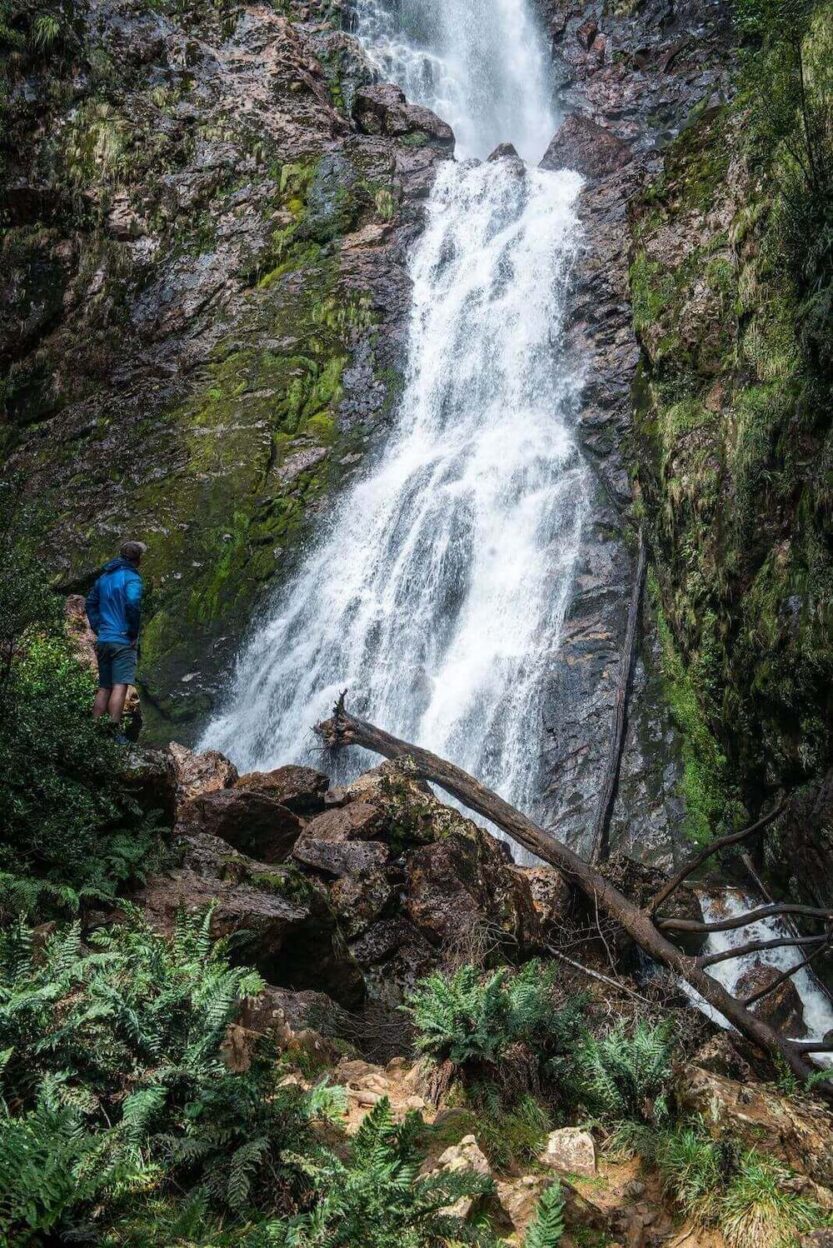
The following day, after waking from a deep post-hike sleep, I grab a quick coffee and drive to Rosebery and the Montezuma Falls trail.
Following the serpentine route of the former North-East Dundas Tramway, the 10.7-kilometre walk is cut into an impossibly steep slope above the tumbling Ring River. Built in the 1890s to service the mining industry, it was an incredible engineering feat to construct a railway through such rugged country.


There’s the occasional cluster of railway sleepers poking above the damp soil and many deep cuttings en route to the falls, but the rainforest is skilfully reclaiming the tramway. Moss, ferns, and liverworts drape from cuttings and old bridges. Trees close in above, seeking to consume humanity’s impact. Birdsong fills the rainforest. Parrots and currawongs dart between the trees and the haunting cries of yellow-tailed black cockatoos echo overhead.
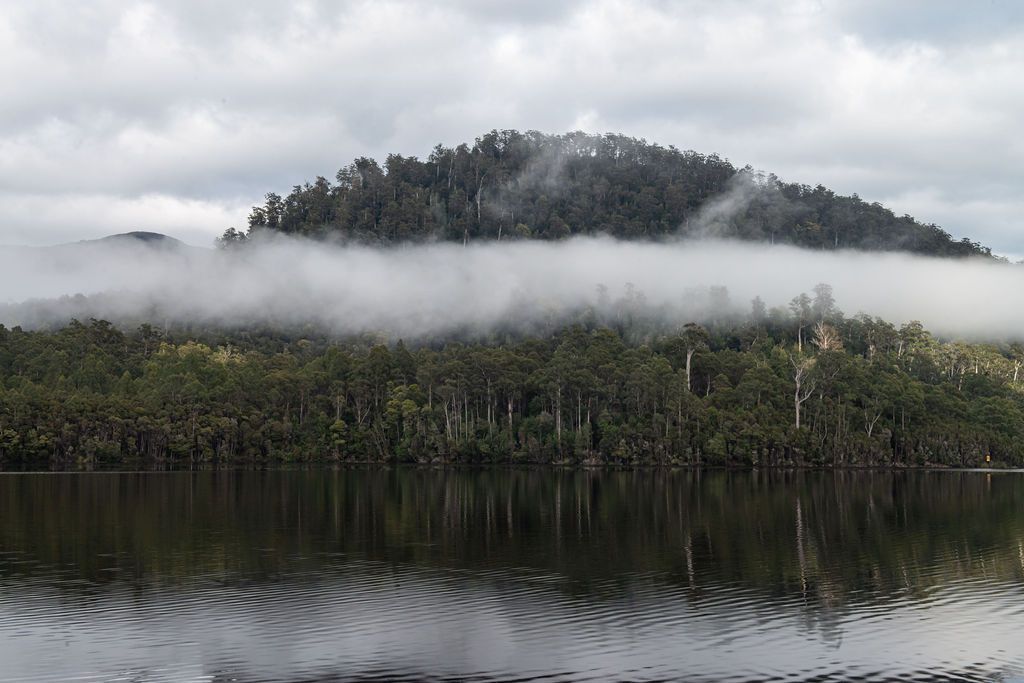
With the roar of the falls now in earshot, I round a corner and am struck by a mineshaft beside the tramway. Peering into its blackness, water drips constantly from the rocky ceiling. I think about the men who risked their lives in this inhospitable environment, hoping to make their fortune. Most didn’t.
The falls are certainly worthy of being named after the last Aztec emperor. Tumbling 104 metres over the escarpment, they have long drawn visitors to marvel at the huge rush of falling water. Although built to transport ore, the tramway also regularly took sightseers to the falls.
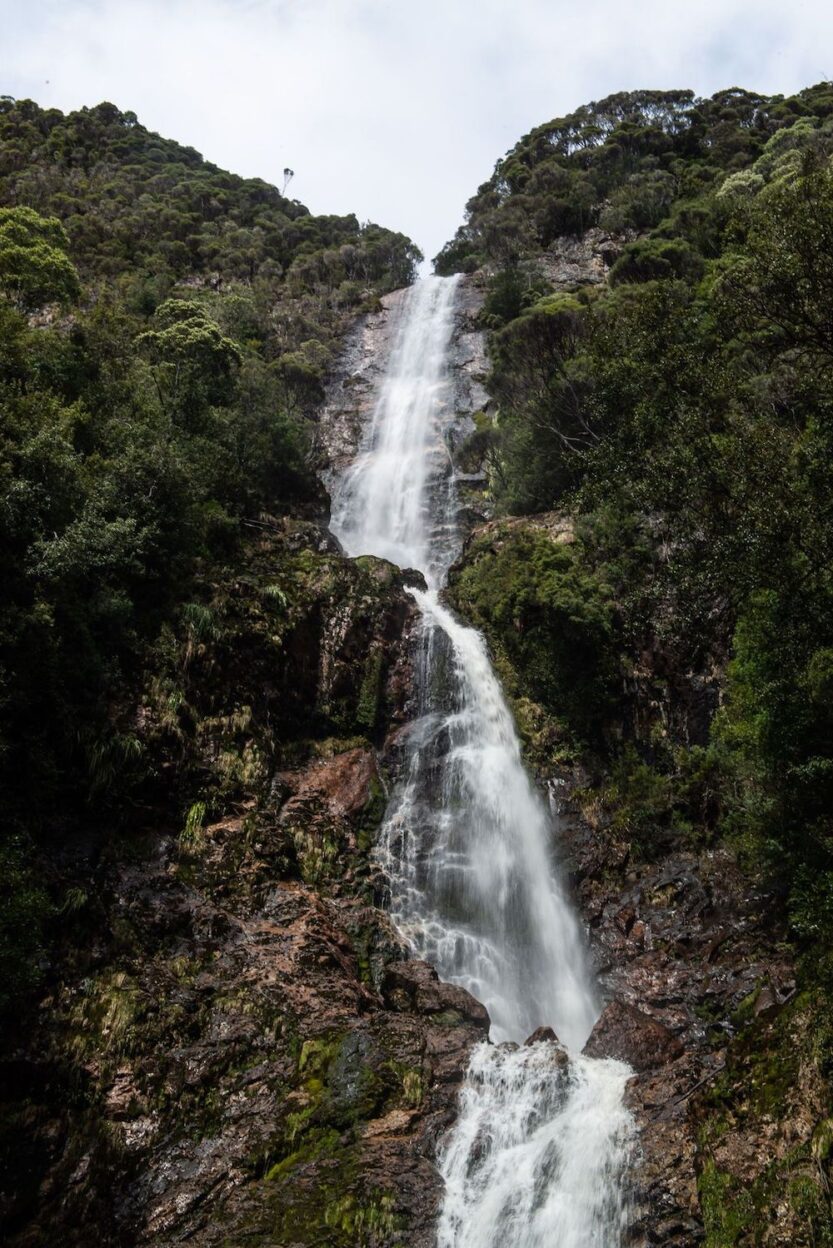
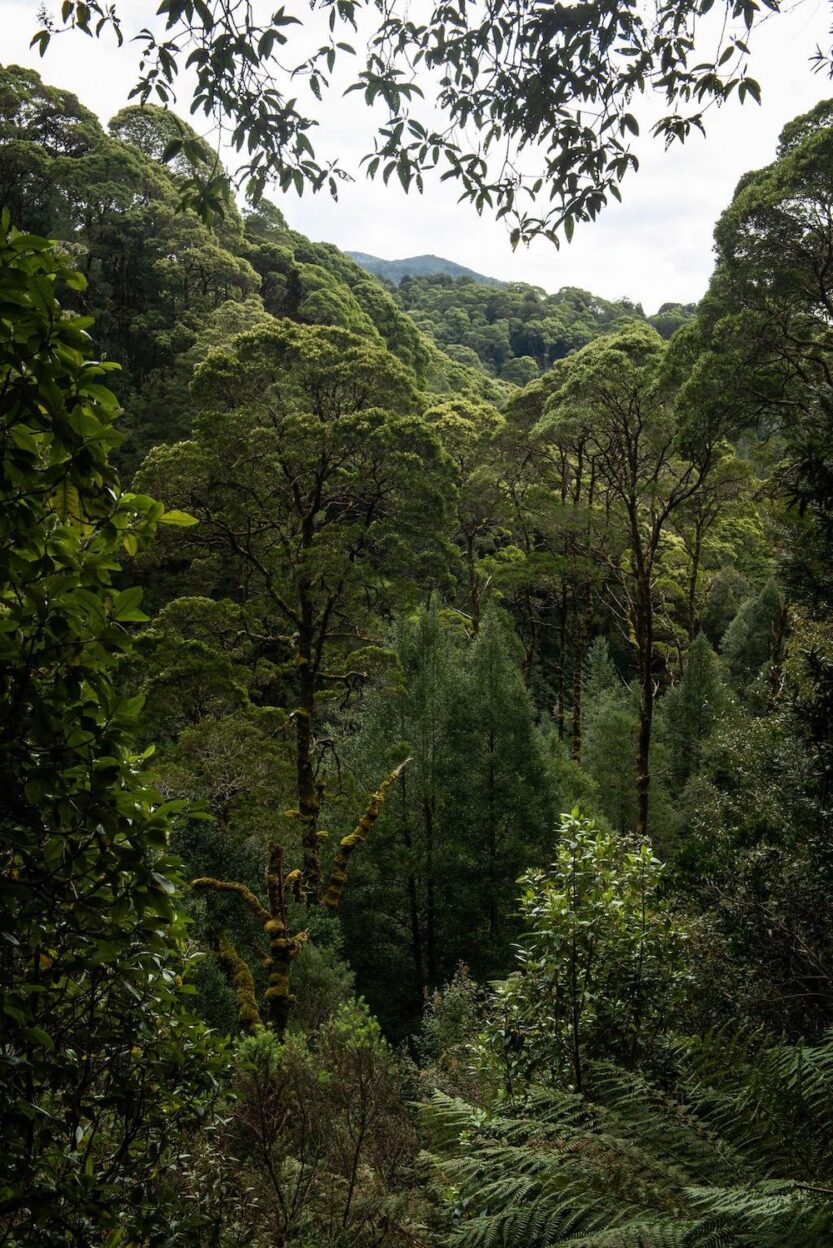
Our knowledge of mining’s impact on fragile environments like the Tarkine is now much greater, however. I walk back to the trailhead, wondering if today’s mining activities could ever become natural attractions like this old tramway.
